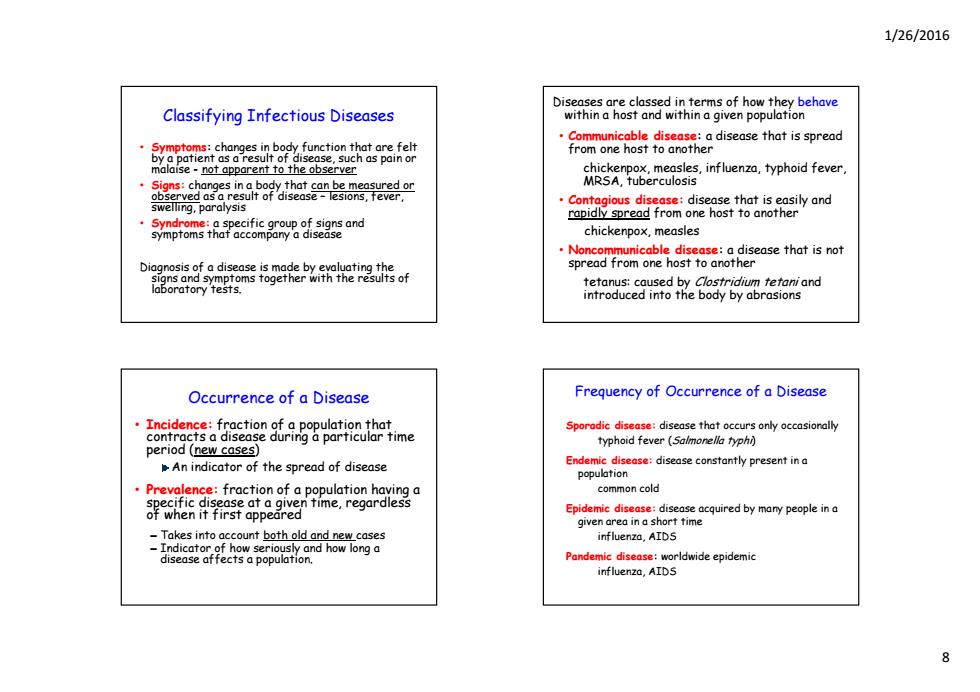正在加载图片...

1/26/2016 Diseases are classed in terms of how they behave Classifying Infectious Diseases within a host and within a given population Communicable disease:a disease that is spread from one host to another chickenpox,measles,influenza,typhoid fever, 82a29b8a29eom0恩r MRSA.tuberculosis swelling,paralysis ‘e6eog1od8eyod chickenpox,measles Noncommunicable disease:a disease that is not spread from one host to another tetanus:caused by Clostridium tetani and introduced into the body by abrasions Occurrence of a Disease Frequency of Occurrence of a Disease Incidence:fraction of a population that Sporadic disease:disease that occurs only occasionally contracts a disease during a particular time period(new cases) typhoid fever (Salmonella typhi) An indicator of the spread of disease Endemic disease:disease constantly present in a population Prevalence:fraction of a population having a common cold specific disease at a given time,regardless of when it first appeared Epidemic disease:disease acquired by many people in a given area in a short time -Takes into account both old and new cases influenza,AIDS rpopuhn Pandemic disease:worldwide epidemic influenza,AIDS1/26/2016 8 Classifying Infectious Diseases • Symptoms: changes in body function that are felt by a patient as a result of disease, such as pain or li h b yp p malaise - not apparent to the observer • Signs: changes in a body that can be measured or observed as a result of disease – lesions, fever, swelling, paralysis • Syndrome: a specific group of signs and symptoms that accompany a disease Diagnosis of a disease is made by evaluating the signs and symptoms together with the results of laboratory tests. Diseases are classed in terms of how they behave within a host and within a given population • Communicable disease: a disease that is spread from one host to another chi k l i fl t h id f hickenpox, measles, influenza, typhoid fever, MRSA, tuberculosis • Contagious disease: disease that is easily and rapidly spread from one host to another chickenpox, measles • Noncommunicable disease: a disease that is not spread from one host to another tetanus: caused by Clostridium tetani and introduced into the body by abrasions Occurrence of a Disease • Incidence: fraction of a population that contracts a disease during a particular time period (new cases) An indicator of the spread of disease • Prevalence: fraction of a population having a specific disease at a given time, regardless of when it first appeared – Takes into account both old and new cases – Indicator of how seriously and how long a disease affects a population. Sporadic disease: disease that occurs only occasionally typhoid fever (Salmonella typhi) Frequency of Occurrence of a Disease Endemic disease: disease constantly present in a population common cold Epidemic disease: disease acquired by many people in a given area in a short time influenza, AIDS Pandemic disease: worldwide epidemic influenza, AIDS